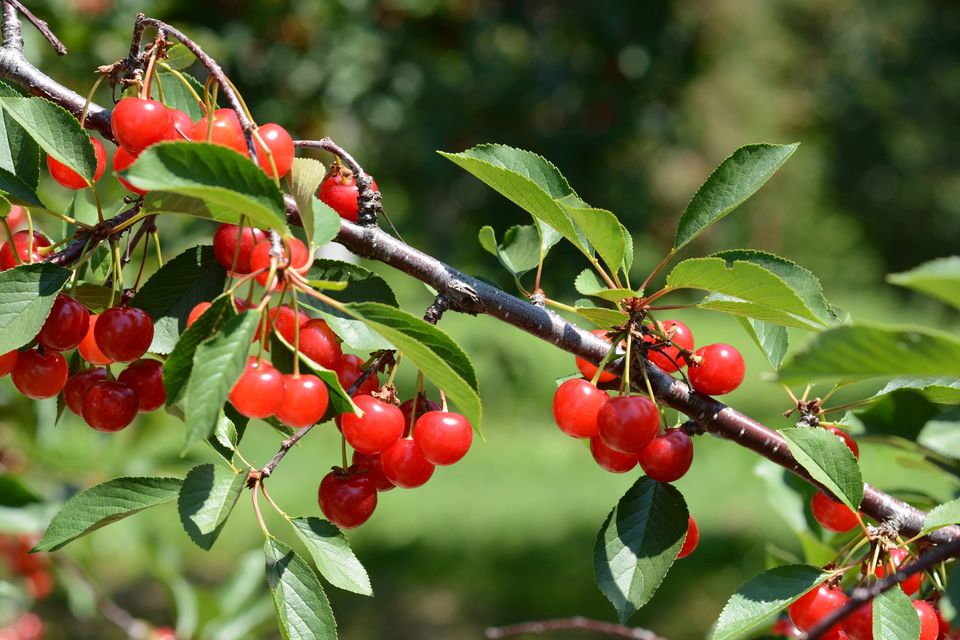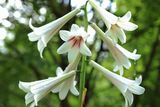Diarmuid Gavin: Plant summer bulbs for a colourful plot
While some species shouldn’t go outdoors just yet, hardy lilies can be planted now for a touch of glamour



You may have noticed on your last weekly shop or visit to a garden centre that there are packets of summer bulbs now available to buy and plant. And how tempting are the pictures on the packets, bulging with the promise of beautiful begonias, dazzling dahlias, gorgeous gladioli and lovely lilies.
It’s time to get these planted if you want your plot packed with summer colour this year. Begonias and dahlias shouldn’t go outdoors until the danger of frost is gone, but lilies are hardy and can be planted outdoors, in the ground or in pots, now.
Lily bulbs can be planted either in autumn or early spring, and if you have heavy, wet soil, it’s recommended to leave it until now so they are not sitting in soggy soil over winter. They’re also a good bulb to plant in pots that can be placed within borders when they are in full bloom where they will add a touch of glamour and opulence — and then stored back stage when the show is over.
To plant in pots, you could fit three bulbs in a container which is around five litres in size or nine inches in diameter across the top. Plant them deeply — three times the depth of the height of the bulb — and a couple of inches apart.
Oriental lilies need acidic or ericaceous compost; Asiatic and Turk’s cap are happy in alkaline or neutral soil. The soil should be rich but free-draining, so use a multi-purpose peat-free compost and add grit to the soil or drainage to the bottom of the pot. Keep soil moist but not saturated.
Some of the taller varieties will need staking but the more compact types will support each other. Place with their heads in the sun and their feet in the shade. When they start to flower in summer, start regular liquid feeding to encourage more blossoms.
Watch out for the lily beetle — it’s easily identified by its scarlet appearance and will munch through buds, stems and leaves, so they need to be removed by hand. They will often jump off when you try to get them so have one hand ready to catch them.
For fragrance, grow Oriental lilies. Asiatic varieties come in a wonderful variety of colours but usually have no scent. One of the most beautiful and popular lilies is the royal lily, Lilium regale (above). Its elegant white trumpet flowers are flushed with pink and have a strong fragrance. Due to their height of over a metre, they will require staking with either bamboo canes or ring supports.
Read more
Reaching for great heights of six feet or more are skyscraper lilies. These giants of the lily world have an Alice in Wonderland other-worldly charm and will stun visitors. Due to its size, it’s best planted straight in the ground, at the back of the border or as a focal point, where it will return bigger and better the following year.
For example, ‘Anastasia’ is self-supporting and can grow up to eight feet tall by year two. Due to its sturdy stem, it is self-supporting and can produce over 25 flowers per bulb — these are fragrant and pink with a white edge
All parts of the lily are very poisonous to cats so they are best avoided if you have one.
Plant of the week
Pieris japonica ‘Passion’
Pieris japonica ‘Passion’
Pieris is an ever-popular spring shrub, the most widely planted being ‘Forest Flame’, with its red juvenile foliage and white flowers. ‘Passion’ is a newer cultivar with deep-purple flowers that drip in elegant bunches against a fresh evergreen backdrop, creating a wonderful contrast. Pieris is an acid lover so happy planted among amellias and rhodos if you have the right soil. Otherwise plant in pots using ericaceous compost. Situate in dappled shade for best results.
Reader Q&A
I have a cherry tree which usually produces a big crop of cherries. Last year, after flowering, the buds dried up and dropped off. Can I prevent this happening again this year?
Richard
Cherry tree
Weather is the most likely culprit here. The fact the fruit dried up suggests a lack of water, which could have been down to a dry spell. Make sure your tree gets sufficient water during the fruit season and keep the base weed-free, as grass and weeds tend to suck away a lot of valuable moisture from the roots.
Submit your gardening questions to Diarmuid via his Instagram @diarmuidgavin using the hashtag #weekendgarden
Tulip Festival
It’s a good time to visit Powerscourt Estate in Co Wicklow with tulip season in full swing. Its Tulip Festival, which runs until May 4, sees over 10,000 tulips blooming in the walled garden and herbaceous border. At the Japanese Garden, enjoy the azaleas, cherry and apple blossom trees, bearing cascades of pink and white flowers. Gardens open from 9.30am-5.30pm daily. The cost is €13.50 per adult or €32 for a family of two adults and three children.
Join the Irish Independent WhatsApp channel
Stay up to date with all the latest news


















